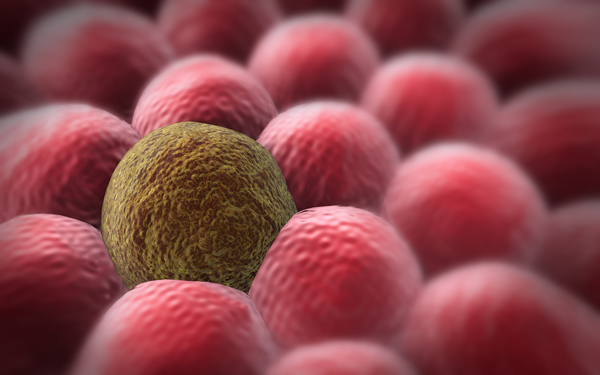Why is it that some tissues and organs, such as the breast or lungs, are more likely to develop malignant tumors compare to others? Researchers at the Centre for Ecological and Evolutionary Research on Cancer in France, have attempted to offer an evolutionary answer to this question in an opinion article published in the journal, Trends in Cancer.
These researchers suggest that natural selection may have played a role in the tissue types which are more susceptible to developing cancer. They postulate that because tumors in larger organs represent a lesser burden on the body compared to those in smaller, critical organs, larger organs may have evolved fewer anti-cancer mechanisms.
“The organs that are the most important to keeping you alive and capable of reproduction, such as the heart, brain, or uterus, may enjoy a better protection against cancer, all other things being equal,” said Frédéric Thomas, an evolutionary biologist at the Center for Ecological and Evolutionary Cancer Research in France. “We are not saying that this is the main factor to explain the different susceptibility of organs to cancer, but it is a factor that contributes with others.”
While many have pointed to external cancer risk factors, such as smoking, and internal risk factors, such as rates of cell division, as an explanation for differing rates of cancer development among organ types, these risk factors are not always sufficient. To supplement our current understanding of oncology, Thomas and his colleagues have put forth an evolutionary theory of cancer susceptibility.
“, whereas small and important organs like the pancreas could be easily compromised with only a few tumors inside,” said Thomas. By this logic, the researchers say that organs such as the pancreas could have better anti-cancer mechanisms, compared to paired organs such as the kidneys.
In addition to their evolutionary theory, Thomas and his colleagues are urging oncologists to consider the environmental conditions – such as acidity, oxygen availability and water level – of organs which could make them a more favorable location for cancer cells to grow and proliferate. “Malignant cells are living entities – it’s just impossible that they are not influenced by the ecological conditions,” said Thomas. “It clearly means that certain organs are more favorable than others to malignant perturbation.”
Thomas and his team are now working on a long-term experiment using mice to measure the incidence of cancer development in certain organs. This, along with other research, will be used to test the researchers’ evolutionary hypothesis.
“A complete analysis requires that we take into account all the possible confounding factors,” said Thomas. “We cannot just look at existing statistics on cancer and the size of the organs and make a correlation to see if it works or not. It’s a novel hypothesis that deserves to be explored.”












Join or login to leave a comment
JOIN LOGIN